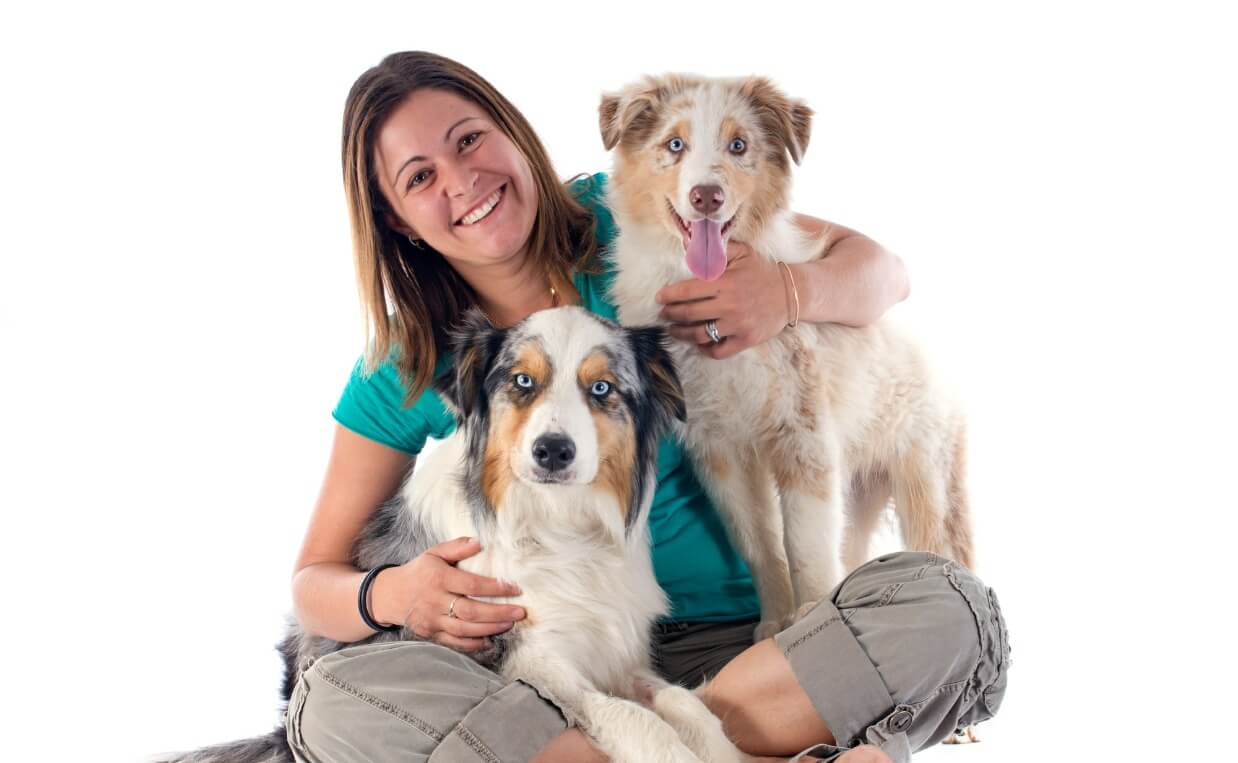
Are you thinking about adding a second (or third) dog into your home? Maybe you have puppy fever. Or maybe it’s the forlorn look of a puppy at a shelter. Or perhaps you love your dog so much you would like to enjoy another one.
Some people think their dog needs a companion, another dog to keep their first dog company. They worry their dog may be lonely when left alone.
Getting another dog can definitely enrich your family, but before you go ahead with any changes, consider the pros and cons of adding another canine to your household.
How Will Your Current Dog React?
Before adding another dog, you should decide whether or not your dog is ready for a playmate. Does your dog have any underlying behavioral issues that need to be addressed, such as:
- Separation anxiety
- Excessive barking
- Leash-reactivity to other dogs or humans
- Pulling excessively on leash
- House-training accidents
- Destructiveness
- Aggression towards dogs, people or other small animals
New dogs can, and will, mirror your current dog’s behaviors, both good and bad. One terrified dog can suddenly turn into two and require twice as much work. Two badly behaved dogs can make life miserable for both your family and the dogs.
Many dogs thrive in a home with other pups, but not all can adjust. For example, if your dog isn’t comfortable around other dogs, bringing home another dog might not be the best choice.
Related: What to Expect When Adopting a Dog With Behavior Problems
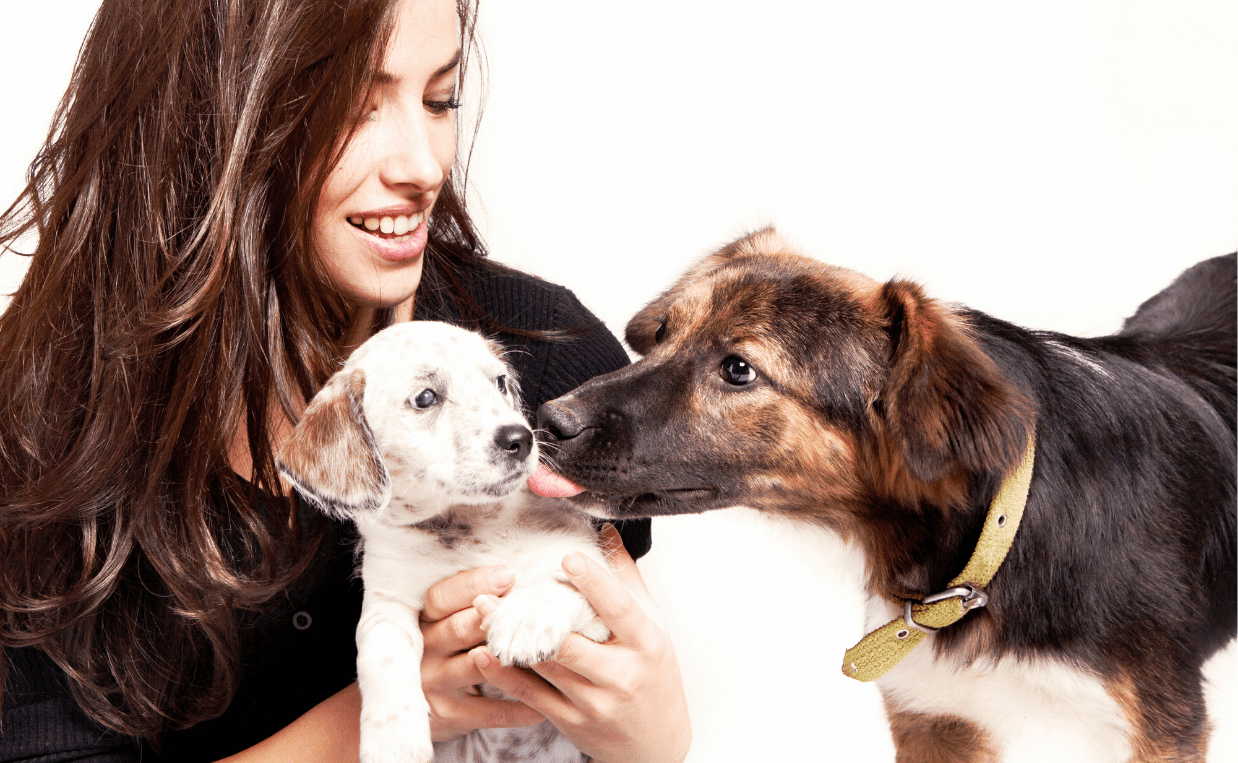
Additional Cost of Owning Multiple Dogs
The more dogs you have, the larger the budget you will need to care for them. In addition to daily maintenance, like food, toys and treats, expenses like training, daycare, boarding, grooming and vet bills will be increased. Pet health insurance is another recurring charge to consider. You’ll want to do long-term financial planning for the costs of adding additional dogs to your family. When looking at your budget, pay special attention to added veterinary costs for senior or injured dogs.
Related: What To Expect When Adopting a Dog With Medical Issues
Adding Another Dog Increases Your Workload
Beyond finances, the biggest challenge for many people is having enough time for more than one dog. While many dogs enjoy playing with each other, both dogs still need and deserve time and attention from you. Sometimes two dogs are able to keep each other company. However, if you have one lonely and bored dog while you spend long hours at work, adding another might mean you end up with two lonely and bored dogs.
All dogs need individual focus, attention, play and training daily, in addition to regular grooming. Having more than one dog means an increase in the daily time spent playing and working with your dogs to make sure each one is receiving the love and attention they deserve.
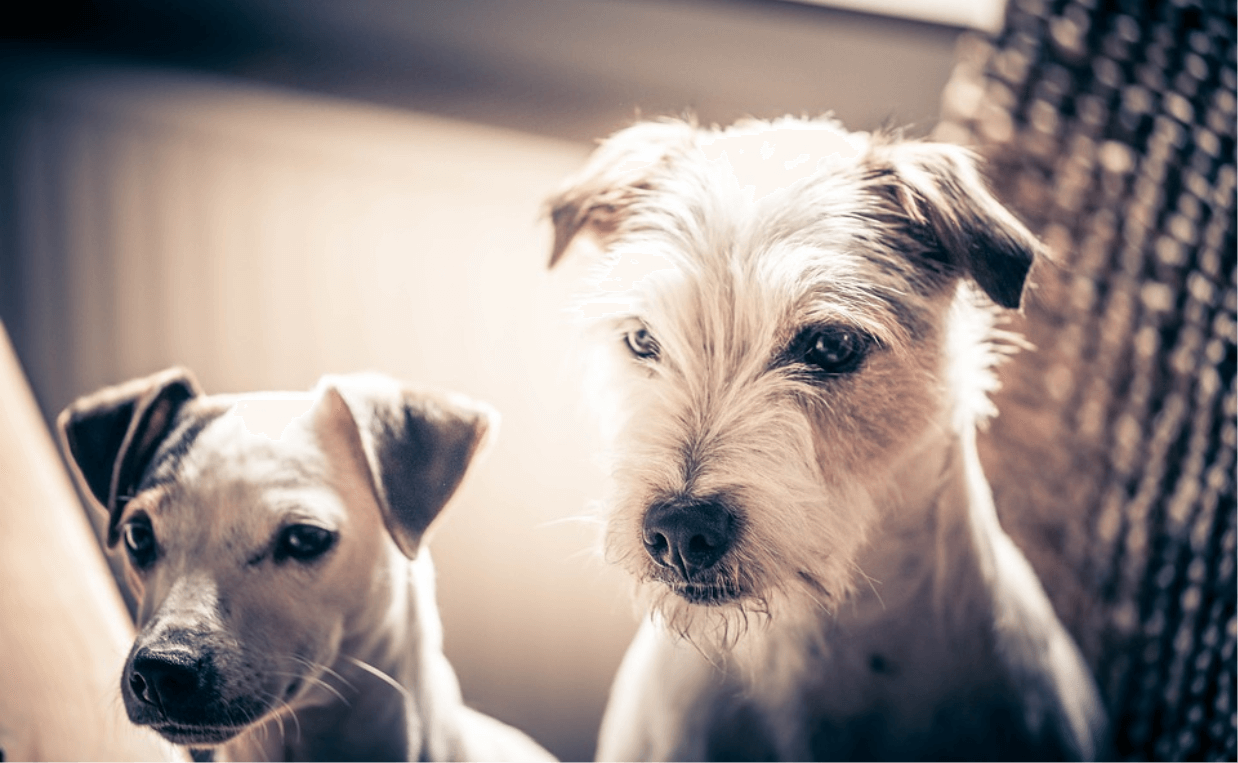
Ongoing Supervision
Some dogs will be happy to spend time together without supervision once they are properly introduced and adjust to each other. However, some dogs will need to be supervised on an ongoing basis, depending on their ages, sizes and temperaments. Unless you are confident your dogs do well together without supervision, you should utilize crates, gates, different rooms or daycare to ensure your dogs are supervised properly.
There are also safety considerations to owning multiple dogs, particularly with dogs who have different ages and sizes. When you have dogs with different energy levels, it’s important to ensure the high-energy dog is able to get his or her needs met without annoying the dog with lower energy needs. Avoid creating a situation where the dogs have to sort things out for themselves, as a confrontation may not end well.
Similarly, you may need to supervise a smaller dog with a much larger dog. Even in play, a small dog can easily be accidentally injured by a larger canine sibling. The larger the size difference between your dogs, the more you may need to closely supervise play and other interactions.
How to Select the Right Dog
Before you choose a new dog, think about what traits will fit in with your existing family members – two and four-legged. Here are some things to think about:
-
Energy levels
Look for a dog who has a similar energy level to your current dog. If your dog is low energy, introducing a energetic puppy or high-energy dog may cause frustration.
-
Dominance
Is your current dog dominant/assertive? If so, adopting a dog with a similar temperament could end in disaster. Try to look for a more submissive dog to compliment your current dog.
-
Confidence
Do you have a dog with low confidence? Look for a dog with more confidence which can help your current dog learn confidence.
-
Gender
As a general rule, look for a dog who’s gender compliments your current dog. For example, if your dog shows a preference for a gender at daycare or other social situations, look for a dog with that gender. Most of the time, it’s easier for males to get along with females. However, with proper leadership dogs can learn to peacefully coexist with other dogs with the same gender.
-
Size difference
In general, you want dogs who are a similar size. Dogs who are much larger than another one can unintentionally hurt the smaller dog by sitting on, stepping on or playing too rough with him or her. Dogs who have a wide size difference can live together, but it does require careful monitoring on the part of the dog parent.
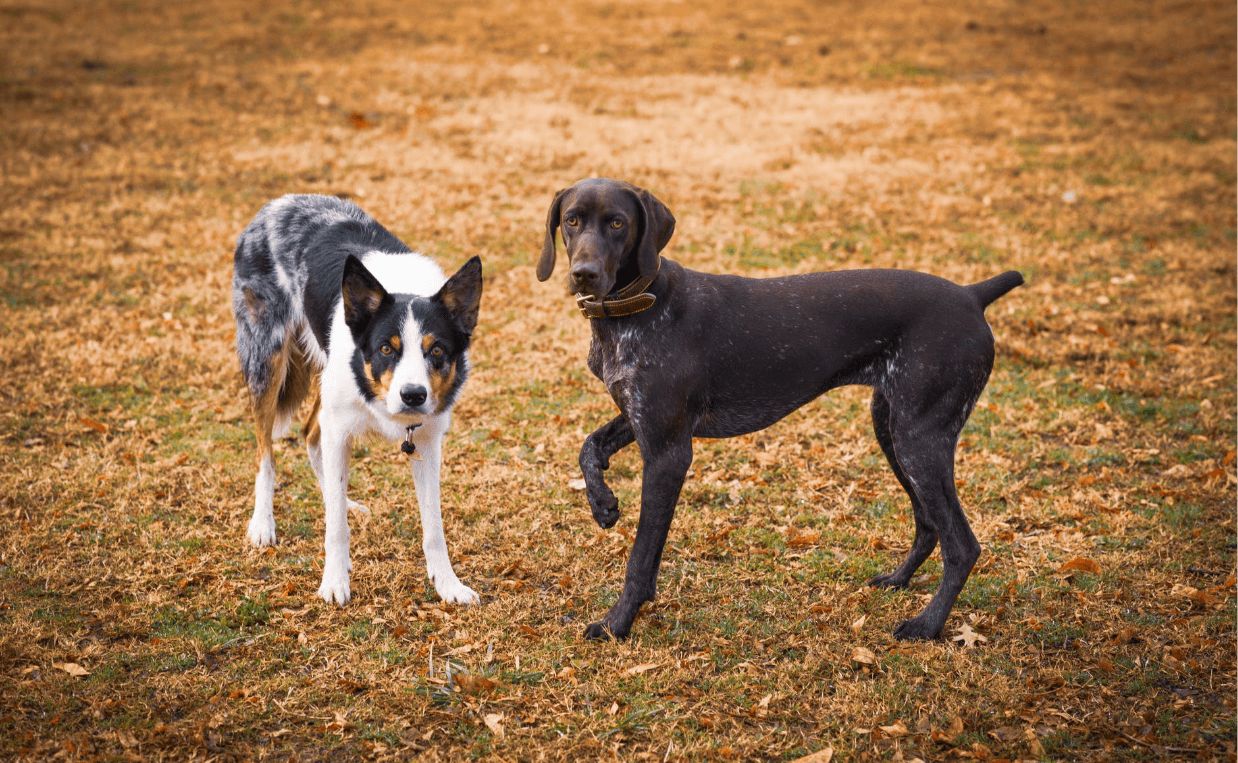
Tips for Successfully Integrating Another Dog Into Your Home
Here are a few tips for ensuring you will have a successful experiencing bringing another dog into your family.
-
Adoption
Do not bring your current dog with you when you go to adopt your new dog. There isn’t a need to bring your dog with you when you select your new dog. You want to be able to focus on the needs of your new dog until you’re ready to introduce both dogs.
-
Neutral ground
Introduce both dogs on neutral ground to avoid territorial aggression. Have a friend or family member help by bringing your current dog to a neutral place, like a park, while you bring the new dog. Take each dog on a short walk and meet at a designated spot. If you have more than one dog now, you will need more people to help so each dog has a designated human. Once the dogs are together, let them sniff each other and keep things positive with a soothing tone of voice. If you start to notice aggression on the part of any of the dogs, be ready to intervene. Do not scold the dogs if they growl or snarl. Stay relaxed and try to help the dogs establish a safe social hierarchy so they will be harmonious even when you are not with them. If the dogs aren’t ready to interact, don’t push them. Let them get to know each other on their own timeline.
-
Rivalry
In order to reduce the risk of rivalry, provide each dog with their own food, water bowls and bed. Leave water bowls out continuously but pick up food bowls after feeding time to avoid food aggression. Also, pick up favorite toys and chews when not in use. It is best to administer favored treats and chews in separate rooms.
-
Supervise play time
Keep the dogs separate when you’re not at home or bring them to daycare if you will be gone a long time. Closely supervise them when they play together and praise them when they interact appropriately. Spend one-on-on time with them to ensure a strong bond with each dog.
-
Walk your dogs daily
Daily walks are crucial to build and strengthen the pack. Dogs are pack animals, therefore, there needs to be an “alpha” (you) and the rest of the pack needs to follow you. You will need to train your dogs to “heel” so they follow you. Start by walking each dog individually until you are confident they know how to “travel” with the pack. The dogs are only allowed to sniff the bushes when you allow them to. Otherwise, they need to learn to stay with you. Controlling your dogs’ actions ensure they understand you are the leader and you control the pack, giving them security and respect for you.
-
Remain vigilant for one month
Continue to carefully supervise, correct misbehavior, supervise feedings, provide daily walks and individual play time for at least one month. Once your dogs realize you are in control and the other dog is not a threat, they will relax and you can spend more time with them together. Eventually, their true personalities will come out and you will have wonderful members of your family to entertain you and love you for the rest of their lives.
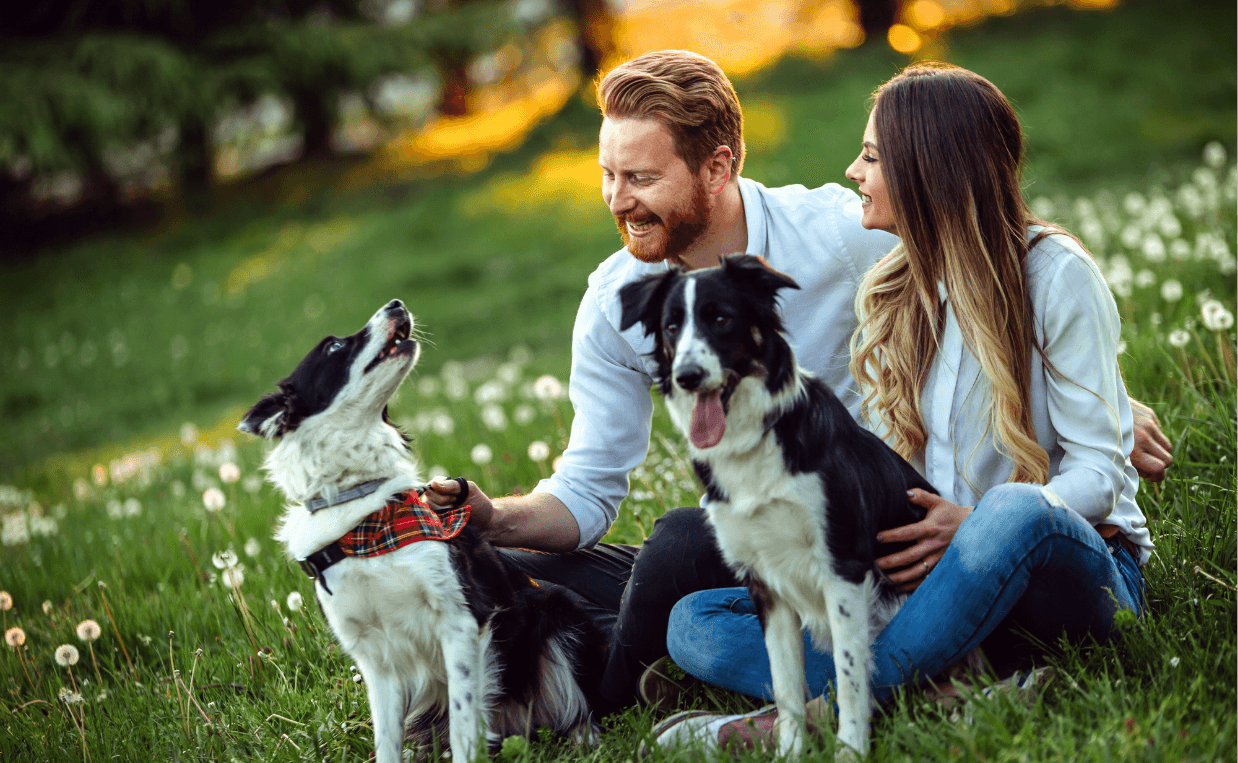
Final Thoughts
The decision of how many dogs to have is an individual choice for you and your family members to make together. Only you know what is right for you. More dogs can mean more fun, but also more responsibility. Make sure you are prepared for the additional time, money and effort required to have multiple dogs.
Have you added another dog to your family? Do your dogs get along? What tactics did you use to introduce and manage your dogs until they felt safe with each other? Please share your experience with the rest of the Canine Campus community. I’d love to hear from you in the comments below!

 Does Your Dog Have Back to School Separation Anxiety?
Does Your Dog Have Back to School Separation Anxiety? What To Do When Your Rescue Dog is Afraid of You
What To Do When Your Rescue Dog is Afraid of You What Everyone Should Know About Puppy Mills
What Everyone Should Know About Puppy Mills 5 Reasons to Adopt a Senior Dog
5 Reasons to Adopt a Senior Dog 8 Things to Consider Before You Adopt a Shelter Dog
8 Things to Consider Before You Adopt a Shelter Dog






Leave a Reply